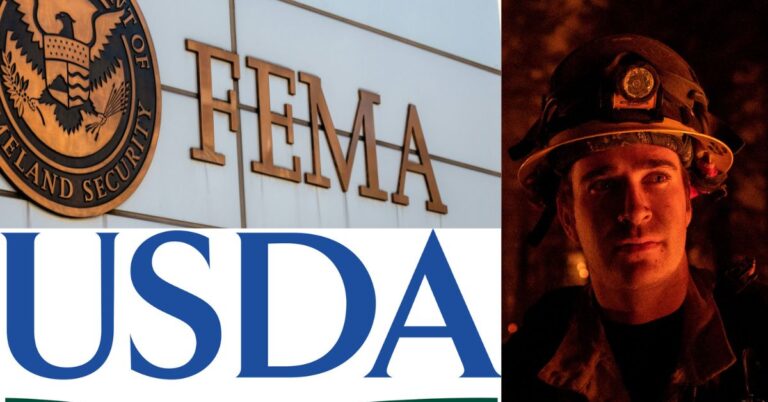Our Mission at the Fire & EMS fund is to provide a political voice to the many great Fire & EMS personnel who bravely serve our communities. These fine men and women often put their lives on the line to protect their fellow citizens but are often left out of the political discussion in this country. We work to change that through a grassroots effort meant to empower these communities and advocate for their needs. As a grassroots organization we believe success begins at the local level and believe that can be accomplished through helping citizens make an impact at the ballot box, raising awareness on the issues to local officials, and engaging the public on local issues which affect them and their communities.
Help First Responders Make Their Case
Citizen engagement is one of the most effective ways that we can advance the causes of our Fire & EMS communities. Through raising awareness and educating the public on key legislative cases in the country, we can effect change through the ballot box to equip Fire & EMS personnel with the tools they need. Some key causes we’re currently looking at are:
- Increasing Pay & Benefits for Wildland Firefighters
- Increasing Entry Pay for EMS Workers
- Providing Better Benefits to Volunteer Firefighters
There are countless resources needed for firefighters and first responders to effectively do their jobs protecting our communities. But more often than not, they are competing against countless other services for a piece of the public budget. Whether responding to fires or medical emergencies, these frontline workers need advocates to help effectively acquire critical resources. Whether it be access to training, better equipment, or medical care, one of our missions is to help first responders make their case for the things they need.
One of the most direct ways any citizen can make an impact for firefighters and help them make their cases is through the democratic process. Through ballot measures, Americans can help affect change for fire departments and help them address issues which impact them directly. As we outlined in our Referendum Report, many of the ballot issues impacting firefighters which fail often do so because voters are given misrepresentations of the issue. Learning the details and making fact based decisions on ballot measures is a critical mission for citizens before they vote.
EMTs in particular are facing low entry pay and even a lack of sufficient healthcare provisions. Many EMTs seek to gain a paramedic license in order to get a pay bump however each agency only needs so many paramedics on duty. The gap in pay and benefits between EMTs and Paramedics has been growing rapidly in recent years. The entry level requirements for EMTs are working to get younger people interested in the field, however a robust behavioral health support system is needed for the benefit of all in the profession, young and old alike.
Volunteer firefighter agencies are facing growing hurdles to recruitment and retention. Pay and benefits are the number one deterrents to those considering a career in volunteer firefighting, followed by an availability of resources to upgrade equipment and provide turnout gear in good condition. Many volunteer firefighters are asked to purchase their personal equipment themselves and wait to be reimbursed.
One of the most dangerous jobs in firefighting is being part of Wildland fire crews who rush out each year into remote areas to combat wildfires. And each year, wildfire season is getting more intense and more dangerous. But for many fighting these battles, pay is not commensurate with the increasing risk of fighting these infernos, which can keep them away from home for days or longer. In response, wildland firefighters have organized the Grassroots Wildland Firefighters non-profit to advocate for better pay and benefits for those going to the frontlines. Citizens can become directly involved in lobbying their elected officials in taking up the cause of these brave first responders and help them get the recognition and help they deserve.
Raise Awareness of Firefighter Needs to Elected Officials
Firefighting is an inherently dangerous job. We all know that. But behind the obvious risks of running into a burning building are the protracted long term risks firefighters face both physically and mentally performing such a high stress, dangerous job. One of our missions is to raise awareness among elected officials about the long-term health needs of our nation’s firefighters. These include:
- High Rate of Heart Disease Among Firefighters
- Mental Health Diagnosis & Treatment
- Presumptive Cancer Coverage for Career Firefighters
One of the issues that often goes overlooked in the public discourse is the physical and mental health of firefighters. These issues are not always given top priority by public officials. Every single day, firefighters go to work facing dangerous situations which often take a long term toll on the physical and mental health of firefighters. It is imperative that public officials understand how fire department budgets work, and the risks posed when budgets do not reflect these needs of firefighters.
We all agree that firefighting is an inherently dangerous job. Whether running into a blaze or being exposed to dangerous chemicals in the process of fighting one, there are many physical health risks to firefighting personnel. However, one of the biggest threats to the lives of firefighters often goes undiscussed: cardiac disease. Studies have shown fighting fires lead to prolonged states of anxiety and tachycardia. Coupled with other factors such as obesity and cholesterol levels has led to a high rate of cardiac related death in firefighters. The National Fire Protection Association found that, of the 60 firefighter fatalities that occurred in 2017, 29 were because of sudden cardiac death.
Throughout a long career, firefighters will likely be exposed to toxic chemicals, whether they be in burning homes, vehicle fires, or industrial fires. This has resulted in a high rate of cancer in firefighters relative to the general public. As of this writing, 49 states have passed legislation which presumes that firefighters suffering from cancer developed the disease as a result of their work. These laws are called Presumptive Cancer Coverage. This entitles them to protection from the state paying their medical bills. However, some states only cover certain cancers and North Carolina does not offer Presumptive Cancer Coverage at all for firefighters still living with the disease.
Like many Americans, firefighters often struggle in silence with their mental health. Mental health issues have often gone overlooked and not acknowledged by much of American society. The same holds true for the firefighting community. But recent data has shown that firefighters are struggling with their mental health at a significant rate. For example, one anonymous poll of 7,000 firefighters conducted by NBC and the International Association of Fire Fighters discovered that 19 percent have had thoughts of suicide, 27 percent have struggled with substance abuse, 59 percent have experienced family and relationship problems and 65 percent are haunted by memories of bad calls. More needs to be done to address this critical need in the firefighting community.
Engaging the Public on Local Issues Involving Firefighters
Firefighting is a local service funded by local budgets using local taxpayer revenue. Although the federal government offers limited grant money each year to departments nationwide, it is not enough to provide everyone what they need. Year after year, and especially in the Covid-19 Era, local funding is reaching a near crisis for many cities and towns struggling to pay for fire & emergency services. Engaging the public on the localized nature of fire funding is essential in maintaining effective levels of operations in their communities. Issues we are currently addressing related to local budgetary issues include:
- How Reduced Budgets Negatively Impact Firefighter Retention
- How Budget Shortages Have Created Underequipped and Unsafe Departments
- How Federal Grants Work to Supplement Local Budgets
Fire departments are funded by local budgets and sometimes supplemented by federal aid. But the local nature of most fire budgets means that local citizens must get involved to advocate on behalf of their local fire houses. To ensure the safety of firefighters and the communities they serve, local citizens need to get involved in securing proper firehouse equipment and updated personal protective equipment that works safely and efficiently.
The nation’s emergency response infrastructure is one topic which is essential for the public to be aware of. As we have covered, there are many deficiencies facing the firefighting community’s infrastructure throughout the United States. For example, over 40 percent of all fire houses in America are 40 years old or older. In order to modernize the nation’s fire houses would cost upwards of $100 billion in additional funding. But the issues don’t end there. Over 50 percent of firehouses do not have adequate exhaust emission controls and over 30 percent do not have backup power capabilities. These are just some of the critical infrastructure needs facing fire houses in America.
According to findings published in 2020, of the million plus firefighters who are currently in the United States, almost 70 percent of them work on a volunteer basis. This makes the retention of firefighters a critical issue for local departments across America. But according to a study called the Volunteer Retention Research Report conducted by the National Volunteer Fire Council, nearly 70 percent of department leadership surveyed said they have had a problem with volunteer retention. These issues can be addressed in part through increased funding and benefits provided to departments and volunteers through grant programs. SAFER funding is a federal program which is geared towards increasing retention through milestone based retirement benefits, health insurance programs, cost reimbursements, and funding for training programs.
The majority of firefighting funding is issued at the state and local level through annual budgets. But year after year, it becomes clear that in most cases local funding is not enough to properly staff and equip our departments. Local departments can receive supplemental funding through federal grant programs. According to FEMA, over $6B has been distributed to our nation’s fire departments since 2010 through 3 core grant programs: Assistance to Firefighters Grants (AFG), provide funding for things such as key operational and safety equipment, vehicles, and fire training; Fire Prevention & Safety Grants (FP&S), help fund important prevention and research initiatives; and Staffing for Adequate Fire and Emergency Response (SAFER) represents the highest funded grant program and is dedicated to giving departments adequate resources towards hiring and recruitment.
Related Blogs

Federal Support for Local Emergency Funds: How Do FEMA and USDA Support Local Emergency Services?
When disaster strikes, local emergency responders are the first on the scene, often putting their lives on the line with limited resources. Behind these brave

State Firefighter Funding: Budget Allocations & Legislative Awareness
In communities across America, fire departments face mounting challenges threatening their ability to protect the public. From aging equipment to chronic understaffing, many stations operate

